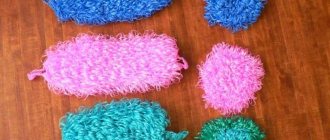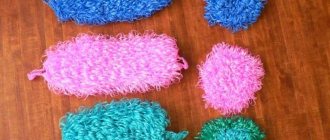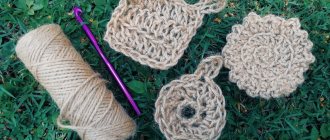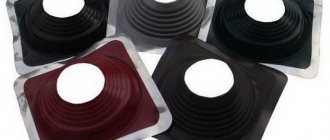You can’t live without a good broom in an apartment or private house. The equipment is used for indoor cleaning, and although it is inexpensive, many people prefer to knit brooms with their own hands.
This is especially true for owners of country houses who have at least a small plot of land. They can easily sow black sorghum on the plot and tie a broom for sweeping.
Part of the inventory can be used for your own needs, the rest can be sold on the market and receive financial benefits.
Do a little magic
Even if you don’t believe in miracles, you need to treat magic with caution! In fact, who knows, maybe wizards and witches hide so cleverly that they never catch the eye of ordinary people. After all, just in case, every person has some item that he tries to save: for good luck, for happiness, for “let it just be.” These are amulets and amulets, which often do not have much material significance, but are valuable as a memory of something good and happy. You can make a broom-amulet with your own hands if you want. He will become a talisman of love for his home, hard work, and the ability to see beauty. And it can actually become a talisman for your beloved home and everyone at home.
Short course in botany
It has become a good tradition on our website to turn to various sections of fundamental science when considering seemingly simple everyday issues. Today's topic will be no exception. What kind of plant is sorghum? What are its morphological features and how do they affect the final product - a broom?
Sorghum is an industrial, forage, and in some regions also a food crop, which can be either annual or perennial. According to the modern classification, sorghum belongs to the Poaceae or Poa family. Its distribution area is extremely wide. It grows in Europe, Asia, North and South America, Africa and Australia.
An extremely useful feature of this plant is its ability to adapt to a wide variety of soils, including slightly saline soils. At one time, the poor chairmen of collective farms in the southern part of the USSR took advantage of this very successfully, when, as a result of thoughtless irrigation, the so-called “closure” of irrigation and groundwater occurred and the irrigated lands quickly began to become saline. Such a trivial, and, however, quite rational move made it possible to maintain the productivity of lands at an acceptable level, in the face of the loss of part of their fertile potential.
Sorghum is both a heat-loving and drought-resistant herbaceous plant. In an era of climate change, the transition of a number of once-abundant regions to the zone of risky agriculture, the ability of a crop to confidently withstand peak summer temperatures is a very useful quality. Cultivated varieties have several stems, about 200 - 250 cm in height, and a powerful, well-developed root system, the depth of which is often comparable to the height of the above-ground part. As they mature, the stems and leaves dry out. Only sweet sorghum remains green in its vegetative mass. By the way, the growing season for this crop is, in our conditions, a little more than 4 months.
The homeland of sorghum is equatorial Africa and there, to this day, along with India, this plant occupies an iconic place as the leading grain crop. In our country its significance is more modest. It is used as a fodder crop, and both green mass and grain can be fed. In conditions of even light precipitation, the vegetative part quickly grows back after mowing, which allows you to get up to 4 mowings per calendar year. The quality of the grain is close to that of corn, so it can be successfully used in the preparation of complete feeds and in the production of alcohol using traditional technology for its production. It is no secret that classic grain alcohol, for more than a century, has been largely produced not from wheat, but from corn. This makes more economic sense. With the proper approach, corn, in turn, can be replaced by sorghum as an attractive export item. However, let's move on to the purely technical side of the matter - the production of panicles.
A broom is not a broom!
If you set out to make a broom-amulet with your own hands, you should first make the original item. Moreover, you need to understand one thing: a broom is not a broom. The streets are swept with brooms, and witches fly on them. And a broom keeps the house clean. He must be clean and tidy in order to do his job efficiently. And they say that this is where the brownie lives. And that’s why the broom became a talisman for the home.
Conclusion
The steam should be light and the broom should be fragrant!
Having steamed to your heart's content in the sauna for the rest of the day, you feel a surge of vigor, health and strength. And if the broom was also knitted with your own hands, with due diligence and accuracy, then the bath procedures will be a real pleasure! The video in this article is ready to share information on these issues, watch it!
Broom maybe...
So, there is a task - to make a broom-amulet with your own hands. A master class of such work will definitely begin with creating the basis of the talisman. It can be made from a huge number of materials, because in a talisman it is just a symbol; no one will take revenge on them. To make a broom as the basis of a talisman, you can use:
- sorghum sprigs - buy a real household broom and select neat, strong branches from it;
- straw - it is best to prepare straw yourself, but you can turn to craftsmen who weave pictures, baskets, and so on from straw;
- cattail - this natural material can be found in abundance on the swampy banks of ponds and ditches; it can be harvested at any time of the year, even when it’s wet;
- sponge - gut a new paint brush made from this ancient material;
- bamboo sticks - an exotic material can also be used as a basis for a talisman;
- yarn - ordinary threads, from which craftswomen knit socks and sweaters, can also be used as the basis for a broom.
What are the benefits of a bath broom
The answers have long been found, and they lie in the field of biology, physiology and human hygiene. Steaming with a broom has a complex effect on the body: massages, improves blood circulation, enhances metabolism, causes profuse sweating, expands pores - harmful microorganisms and toxins are released!
And a lot also depends on the type of broom: the leaves contain essential oils that have a special effect on the body: they kill germs, destroy bacteria, rejuvenate the skin, and improve its condition. Adherents of the modern Russian bath use about 80 types of brooms; they can be monofloral (from one type of plant) or mixed from two or more types. Here are the beneficial effects of the most popular varieties:
Birch. The most popular broom, alpha, omega and spiritual anchor of the Russian bath. Birch produces a large amount of essential oils that treat diseases of the upper respiratory tract and lungs, cleanse skin pores, stimulate kidney function, relieve pain in joints and muscles, and slow down inflammatory processes. Doctors often recommend that smokers and people suffering from asthma take a steam bath with birch brooms. Oak. An oak bath broom heals abrasions, improves skin condition (doctors recommend it for hyperfunction of the sebaceous glands, excessive porosity and acne), eliminates signs of allergies, asthma, relieves inflammation, headaches and lowers high blood pressure). Lime. It calms, normalizes the functioning of the nervous system, cleanses the bronchi, treats colds, has a beneficial effect on the lungs, accelerates regeneration processes - people often notice how wounds and scratches heal after a bath with a linden broom. Alder . Alder leaves contain substances similar to acetylsalicylic acid in their effects on the body; They are used for severe pain in joints and muscles, arthritis, rheumatism, gout. Aspen. It is used for exacerbations of rheumatism and gout, strengthens the immune system, makes it resistant to viruses, and has a positive effect on the nervous system. Eucalyptus. Has an excellent inhalation effect. Eucalyptus broom is indispensable for diseases of the bronchi, larynx and trachea, and for the prevention and treatment of colds. Rowan. In a sense, it is an “anti-broom”, it does not relax, on the contrary: it mobilizes the body’s resources, puts it in a state of vigorous concentration, increases attention, tones, stimulates mental and physical abilities for fruitful work. You need to know this, and don’t worry about it before bed.
Article on the topic: Is it possible to go to the bathhouse after completing the guards?
Bath brooms are made from bird cherry, juniper and hazel; St. John's wort, oregano, bird cherry, raspberry, sweet clover, coltsfoot, and tansy are added to them. Our ancestors loved to steam with fragrant elderberry brooms, they used cherries and currants - but only fresh, they could not be stored for future use or even steamed. The shelves were covered with herbal mixtures, and bunches of grass were hung from the ceiling.
How to tie a broom?
Creative work - create a broom-amulet for your home with your own hands. The beginning is the most time-consuming. The selected material must be cut. The length and thickness of the broom are determined by eye. Usually its length is about 20-30 centimeters, and the diameter of the handle depends mainly on the width of the main part. All twigs, straws, and threads should be cut to a length several centimeters longer than necessary. This is due to the fact that after the handle is knitted, the lower part must be positioned in the shape of a fan, secured and trimmed evenly. The handle is assembled using strong, unbreakable threads or wire. Usually the constrictions are made in three places, spaced evenly. The lower part of the broom is formed by sequentially braiding small bundles of main branches.
They are divided into fairly thin strands and secured with thread or wire. This division can be repeated several times, knitting the strands in a checkerboard pattern. In some cases, for example, when a broom is made from sponge or yarn, it is recommended to coat the material with PVA glue, let it dry almost completely, then form a fan and put it under a press for a day. This is done to secure the shape. But now the broom has acquired the shape of a fan, and it can be trimmed, making the lower edge straight or semicircular, as desired.
A broom is a simple tool, but requires preparation
A newly purchased broom needs preparation before it can be used to clean the floor. And it is important to prepare it correctly so that it serves well and for as long as possible. There are no exact instructions for pre-processing a broom, but many use those that grandmothers and mothers shared with them.
Broom for sweeping
A new broom can be filled with boiling water, preferably with the addition of a small amount of salt (at the rate of about 1 teaspoon per 1 liter of water). Although some use only 2 tsp. for a 10-liter bucket - this does not make the procedure any worse. Leave the broom in a bucket of water until the liquid cools completely (at least 3 hours). Next, it is dried (preferably in a pressed state).
Advice! For ease of use, the broom whisk can be trimmed - cut it at a slight angle. Then it will be easier to handle hard-to-reach places and corners.
You also need to properly care for the broom so that it lasts as long as possible and does not deteriorate.
- It is not recommended to store this cleaning tool in an upright position. The best option is to place the broom on a horizontal surface after use. As a last resort, the broom is placed in a corner with the sweeping part up.
- Before using, it is better to soak the broom in a hot salt solution each time.
Three-stitched sorghum brooms
How to decorate?
Often decorative elements are used as talismans. What, for example, is the meaning of the broom amulet? Making an amulet for your home with your own hands and hanging a handmade talisman on the wall is not enough; it is also important to supplement it with significant elements. They can be real, store-bought items, or they can be stylizations created independently from scrap materials. The most convenient way is to sculpt them from a suitable material and paint them. Plasticine will not work, since the amulet whisk often becomes an interior decoration in the kitchen, and it can be hot there, and the plasticine will leak. The easiest way is to sculpt the necessary decor from salt dough without running around shopping for creative materials. The broom handle and its edge can be decorated with patterned braid of a suitable color.
How to prepare branches
When the main bath wealth has been collected, you can begin the sacrament of building a broom. Choose a convenient place in the shade, prepare a knife, scissors, axe, twine or other rope for tying the broom.
Knitting a broom is not a delicate job, but if you do everything somehow, in a hurry, then the broom will turn out appropriate. Therefore, be patient and rest assured that this activity will give you only positive emotions.
When inspecting the branches again, you should cut off all the lower unnecessary foliage. Make a broom only for yourself, whatever will be convenient for you in the steam room, and build it that way. When cleaning the branches, evaluate their suitability for use in a sauna; some of them, upon careful examination, may not be suitable for sauna loads.
Modeling mass
In order to sculpt small figures at home, there are many materials. They make both cold porcelain and clay mixture on their own. But there is the simplest material available - bioceramics. This is the name for a mixture of flour, fine table salt and water. Here is the classic recipe for such a mass:
- 200 grams of flour;
- 200 grams of salt;
- 125 grams of water.
You can improve the recipe a little by adding 100 grams of starch and another 50 grams of water. With this addition, the dough becomes more plastic, and small parts can be made from it. The mass is kneaded to a homogeneous consistency and stored in the refrigerator, wrapped in cling film. Details are molded from it as needed and left to dry in the open air. Finished items are painted with regular paints and covered with clear varnish. You can also involve children in this activity, help them sculpt figures of the appropriate size and shape, teach kids the names of certain objects, telling stories and fairy tales about them. Such a talisman will become a real guardian of the family, because spending time together will forever remain in warm memories.
We knit a sorghum broom with our own hands
1. Fold the peeled and dried sorghum twigs into a bundle approximately 10-14 cm thick, trim the panicles, compact them and tie them tightly with wire, thick thread or thin rope almost at the very base of the panicles.
2. Choose the tying method yourself, the main thing is that the bun is tight and does not fall apart. Now divide the bundle into three parts and tie each of them separately at a level just below the previous tie.
3. Make three such buns.
4. Then, in the bunches that will be located on the sides of the broom, cut several stems obliquely, stepping back from the trim up the handle by about 5 cm. This is done in order to reduce the thickness of the handle of the future broom.
5. Now gather all three bunches together so that the cut stems on the side bunches are located in the middle of the broom and fit snugly against each other, and tightly tie the broom handle in this place. Make the next straps on the handle every 10 cm.
6. To give the broom a more neat look, trim the broom with scissors so that the rods do not stick out and are the same size. Do the same with the handle.
What is this for?
In witchcraft, and talismans, amulets and amulets somehow belong to the world of magic, each item has its own meaning. How to make a broom-amulet with your own hands so that it brings benefits to your home and everyone in your household? Use the right decorative details:
- coins, preferably silver, mean success in business;
- a burlap bag promises wealth;
- a bay leaf foreshadows glory;
- a head of garlic will protect you from evil spirits;
- a loaf or pretzel speaks of hospitality;
- sunflower seeds mean that there will be many children in the house;
- red pepper means a strong masculinity;
- rose hips - feminine beauty and wisdom;
- little shoes symbolize comfort in the home;
- wheat grains or beans mean prosperity and well-being;
- a figurine in the form of a house with a roof and a window will protect the entire house as a whole.
All the elements for creating a broom amulet with your own hands can be molded, although real fruits and grains are more suitable as an amulet. You can also use flowers, pet figurines, ribbons and bows, and stones for decoration. Making a talisman for your home with your own hands, finding out the meaning of each symbol, preparing the necessary elements means helping your home become more beautiful and, if you believe it, giving it protection.
The process of preparing branches, knitting and drying in detail
Well, having learned a little about the variety of raw materials for homemade “massagers,” let’s move directly to the answer to the main question - how to properly make brooms for a bath?
The general time for collecting raw materials, regardless of the chosen type of tree (be it birch, oak, maple, linden, etc.), is when the leaf has already matured. In other words, the season for harvesting branches is from early July to mid-August. Collecting raw materials at this time is completely justified, because the leaves of the trees are already becoming large, but they still have enough essential oil glands.
The general rules for choosing a tree for collecting raw materials boil down to the fact that you need to look for young trees/shrubs with straight flexible branches, at a distance of at least 3-4 kilometers from a residential area.
Proper harvesting of birch branches
So, in this article we decided to describe how to correctly collect branches for birch brooms so that they turn out to be of high quality and as useful as possible.
Despite the fact that we will be talking about a specific type of raw material, these collection instructions, in principle, apply to other trees/shrubs:
- Firstly, it is better to break branches for brooms in the first half of the day, immediately after the dew has disappeared.
- Secondly, you need to skillfully select trees. As a rule, these are tall curly and weeping birches, whose branches fall in braids, and the leaves are porous, slightly rough. The branches we need can be characterized as follows: flexible, unbreakable, thin, without knots, 40-50 centimeters long.
Important! Many folk knitters recommend, on the contrary, choosing young birch trees that have never bloomed, explaining this by the fact that they have the most delicate leaves. Of course, we cannot disagree. However, you still need to look at these sheets and even try with your tongue: if the upper side is rough, then you can safely look for another tree. The leaves should be velvety on top.
Leaves are what you need!
- Thirdly, when cutting raw materials, do not use “whips”. Branches for a bath broom must have 2-3 forks, so to speak, for thickness and splendor. It is also desirable that the leaves on them are small or medium.
Attention! To prevent trees from suffering, cut only a few branches from each.
Raw materials for creating bath “massagers”
Knitting brooms
How to make a bath broom correctly - where to start knitting it?
Below is a step-by-step technology for this simple, but requiring special skills and abilities:
- Having prepared a sufficient armful of birch branches, you can start knitting. For one product, enough raw materials are taken so that the handle is no more than 5 centimeters thick. Agree, it will be inconvenient to use a thick and heavy broom.
- The branches are cleared of knots and leaves where the handle will be. As for its length, there are no special rules. You just need to leave the handle long enough to make it comfortable to hold and use the broom.
- When collecting twigs in a broom, the thicker ones are placed in the middle, and thinner ones around them - this way the product will be very durable and can be used 2-3 times.
Knitting brooms is not difficult!
- Then you need to shake and turn over the branches collected in one bunch several times to make sure that the half-finished broom is even, dense, fluffy and beautiful.
- The knitting technique itself is simple and consists of several steps. We need to fasten the collected branches with strong synthetic twine:
- The first knitting is located closer to the end of the handle of the product and is not tightened very tightly. Then the broom is divided into two equal parts, which are twisted 360º (both!). The clamp will be strong. And if the first knitting is made too tight, then there will not be enough strength to twist the broom, or the branches will simply break.
- For the second knitting, you need to cut a piece of twine as long as possible and tie it above the bottom one as tightly as possible. There is no need to trim the ends of the synthetic twine; they will later serve to connect two brooms into a pair.
Visual knitting technology
- Now all that remains is to carefully trim the ends of the branches to the required length using a sharp ax on the stump. You can move on to drying!
Drying and storing brooms
During drying
First of all, we warn you - you cannot dry them in the sun or use various artificial drying methods. The brooms dry out on their own, the main thing is to properly organize a place for them to do this.
It should be in the shade (for example, a barn, garage, attic, haystack, etc.) with moderate humidity. An increased concentration of moisture can cause mold to appear on the leaves, and then the brooms will have to be thrown away.
It is best when the products take the shape of a fan rather than a panicle. To achieve this result, fresh brooms are laid out on the floor and turned over every day. When they dry (not dry!) you will need to stack them on top of each other, periodically changing places - this way they will gradually flatten.
It is important not to dry them out! After drying, all the leaves on the broom should have a concentrated matte green color, and the aroma of balsam birch oil should emanate from the broom itself. After steaming the product, this pleasant smell will sharply intensify, which will have a beneficial effect on the health of the entire body.
For your information! After drying the products, the second knitting may become loose and will need to be re-tied.
After about a week, the finished brooms can be stacked tightly in a dry, dark and well-ventilated area. And to prevent them from getting dusty, you can wrap them in cellophane or paper, but not tightly, so that there is little air access.
Storage of dried products
A good option for storing bath whisks is in a haystack. In winter, you can also store simply prepared branches in the form of one sheaf, and, as necessary, knit healing “massagers” from them. In wallpaper cases, the leaves are preserved better.
Parking brooms
You also need to know how to steam a broom!
So we learned how to make bath brooms. However, there remains one more important nuance, without which the competent preparation of a “massager” for the steam room cannot be considered complete - this is its preparation directly for use.
The easiest way to steam a broom is as follows: lower it into a bowl of cold water for 3-4 minutes, then into warm water for the same amount of time, and finally into a tub of hot water (not boiling water!). At the same time, it is important to cover the tub with something so that our broom “steams.” But you can tell when to take it out by its delicious aroma!
Advice! Do not throw out the remaining water from steaming - it will be useful for watering hot stones or the walls of the sauna stove, thanks to which the entire steam room will be filled with wonderful natural smells.
Put together
When the broom is ready and the decorative elements have been selected, they need to be beautifully placed on the base broom. Experienced craftsmen and those who believe in magic do not recommend making a talisman for the home with all possible elements at once. After all, a young family needs children, and those who already have children need stability and success in business. So you should make a broom-amulet with your own hands in accordance with life circumstances. All elements must be secured evenly; their location relative to each other does not matter. The decor can be attached with glue, for example “Titanium”, or with thin wire. If the parts are molded, then the wire can be placed in the body of the figure in advance.
When to cut birch and oak branches
If we are talking about how to knit brooms for a birch bath, then there is a clear period of time from the 11th to the 30th, when there are no earrings on the trees yet.
But it is necessary to take into account the general condition of the foliage:
- For a birch broom to be good for a bath, the outer part of the leaf should not be rough, but on the contrary, it should feel soft and velvety to the touch;
- when you try to pull the sheet, only a small part of it should come off, and not the entire plate.
If we talk about the timing of harvesting oak brooms for a bathhouse, then they fall in the second half of July or the beginning of August. By that time, the leaf should not only get stronger, but also acquire a rich green color in comparison with the young color that is characteristic of it at the beginning of summer
If you do not wait the right time, early mating will lead to a decrease in the strength of the oak broom. But you can’t be late either! The deadline for preparing oak brooms for a bathhouse is the time the first acorns appear.
Where to place the broom-amulet?
For the amulet to work, you need to know both how to make a protective broom and the rules for its use. As a decorative element, it is undoubtedly hung inside the home. The best place for its location would be the kitchen - the heart of the house, where everyone at home gathers, delicious food is prepared there to maintain strength and create joy. Inside the house, a broom-amulet, created with your own hands, is hung with the handle up and the main part down. This symbolically serves as a way to remove everything negative from the house; the broom, as it were, sweeps away all the bad things. It is also important to keep the amulet itself tidy, because, according to legend, it is in the broom that the brownie settles, and in order for him to be happy, his home should always be cozy, clean, and beautiful.
Well, creativity always gives joy - through the process of ideation and mastery, and also through the result. You should create a broom-amulet with your own hands for two reasons: to decorate your home and give it a cute amulet that keeps you warm and cozy and helps you fulfill your wishes. Good luck!
What are brooms for sweeping made of nowadays? Cleaning brushes
Brooms will never go away from everyday use due to the fact that there is a certain number of floor coverings that require careful handling. These are laminate, parquet, some types of tiles (for example, vinyl), etc. In no case should they be cleaned using brute force. And a broom comes in handy here.
Nowadays brooms are also made from polymers. They may have an antistatic brush and a long plastic handle. They are convenient to work with, and such brooms are also good at collecting dirt from the floor covering. Synthetic products can be used to clean any surfaces, they do not scratch anything, do not generate dust (to avoid the dusting effect when cleaning with a regular broom, you have to wet it), they allow you to reach hard-to-reach places and sweep them well.
This is what a modern broom looks like
Synthetic brooms are used for cleaning both residential premises and local areas. They are purchased by enterprises for cleaning production areas. Their main advantage is durability compared to conventional brooms and lack of fragility.
Most often, synthetic brooms are called brushes - they just look exactly like brushes, bearing little resemblance to a standard and familiar broom. They are usually made of PVC. Their cost is greatly influenced by the quality of the raw materials, the length of the handle and bristles of the brush itself, strength and manufacturer brand.
Soft synthetic floor brush
By the way, in modern artificial brooms the length of the sweeping part (broom) has become much shorter than in their predecessor - the traditional broom. But the handle has become longer and can have a variety of configurations. These brooms are lightweight and easy to clean/storage; they can be treated and disinfected with various chemical compounds.
Table. Types of brushes.
Rectangular, with long handle
Laminate brush
What to do with the branches after harvesting?
An attic space is a good place to store harvested branches, or a heap of hay is even better. A balcony or even a mezzanine is suitable for storing workpieces in urban conditions. In this case, the brooms will need to be pre-wrapped in paper bags.
Drying brooms
Drying brooms on the roof of the barn is also allowed. This is done in the following sequence:
- meadow hay is spread over the roof;
- birch branches are laid out on the hay with small gaps;
- a layer of hay is laid out on top of the branches;
- Every day (some experts advise increasing this period to 2-3 days) the branches turn over. This is done over the course of a month.
Most often, dried pieces are tied in pairs to a rope and stored in this position. You don’t have to knit brooms right away, but combine the branches into small sheaves. The sheaves are wrapped in hay and stored in the attic. Before going to the bathhouse, the required number of branches is pulled from the sheaf and tied into a broom.
Where it should always be clean so that money doesn’t go away
In order for wealth to fill the house, you need to make room for it. Do regular cleaning. Remove clutter, clear space.
The kitchen and hallway are special places that should always be clean.
Cuisine is concerned with preparing and eating food. And food has always been considered a sign of prosperity. The richer and more varied the table, the richer the family. This is a place of concentration of monetary energy, which should circulate freely without coming into contact with dirt.
Money can flow with water. Make sure that in the kitchen, the place where wealth is concentrated, the taps are in working order.
The hallway is the border between our home world and the outside world. There shouldn't be any trash here.
Immediately wash the shoes you came in and remove external negativity from them.
To prevent your money from going away, immediately put your shoes on a shelf or in a closet.
Who is entitled to unemployment benefits and how much can you expect?
Remember that you need to clean the apartment during the day, making room for positive, bright flows, including money.
LiveInternetLiveInternet
—Categories
- KNITTING: CROCHET, SPOKES. SEWING, CRAFTS (Hobby) (1681)
- DECOR, DECOUPAGE (64)
- MAGAZINES-3 (50)
- MAGAZINES-2 (50)
- MAGAZINES (50)
- Sewing-2 (50)
- Sewing (50)
- Jackets, sweaters - No. 2 (50)
- Jackets, sweaters (50)
- Beading (22)
- MAGAZINES-4 (15)
- Jackets, sweaters No. 3 (12)
- embroidery (6)
- Sewing-3 (5)
- Internet, LiRu, programs, earnings, STUDY, BUSINESS (838)
- COOKING. Recipes for tea, drinks. Dessert. BAKERY (831)
- HEALTH: gymnastics, meditation, dancing, healthy and (634)
- EXERCISES FOR FACE AND NECK (47)
- inserts in comments, frames, diagrams, WALLPAPERS, BACKGROUND (507)
- HOLIDAY, GIFTS, EVENTS (502)
- Events of the Day - January (37)
- Events of the Day - December (37)
- Events of the Day - May (37)
- Events of the day - October (34)
- Events of the Day - April (34)
- Events of the Day - March (33)
- Events of the Day - September (33)
- Events of the Day - November (32)
- Events of the Day - February (31)
- Events of the Day - July (31)
- Events of the Day - June (30)
- Events of the Day - August (25)
- COOKING. Main course recipes (495)
- music, various songs (460)
- Valery Leontyev (422)
- TESTS, RIDDLES (421)
- Astronomy. Astrology (horoscopes). Psychic (304)
- video creation, flash, animation, photoshop (296)
- ECOLOGY, animals, birds, fish, flowers, nature (276)
- DESIGN, HOUSE, construction, MOVING, Utilities (257)
- Fashion, beauty, CHARM (250)
- WATCH MOVIES, cartoons (233)
- RELATIONSHIPS, FAMILY, PSYCHOLOGY, QUOTES (222)
- frames (216)
- EQUIPMENT, technology, SCIENCE, production (202)
- MILITARY THEME (5)
- TRAVEL, RECREATION, LANGUAGES and COUNTRIES, CITIES, VILLAGES (191)
- FUNNY AND VERY FUNNY (178)
- Miscellaneous (173)
- About the stars, interviews (150)
- Pictures, photos, photos of paintings, ART miscellaneous (148)
- POLICY. Politicians. ECONOMY (134)
- CREATION. PAINTING.Miscellaneous (124)
- INTERESTING FACTS (123)
- All about GAMES (117)
- SCHEMES (117)
- Vladimir Vysotsky (111)
- About great, famous, famous people (108)
- GARDEN WORK. PLANTS (106)
- Construction at the dacha (13)
- poems (104)
- Prayers, sacred things, PARABLES, SIGNS (102)
- LiRu's friends, photos, interviews, miscellaneous (101)
- Experienced. Memorable (92)
- Canning, PREPARATIONS (89)
- Kurgan and Kurgan people, From the KIK newspaper (77)
- My videos, song clips (74)
- CLIPART, SEPARATORS, ANIMATION (73)
- Scorpions and others (73)
- COOKING. Soups, liquid dishes (69)
- My photos, personal (69)
- I'm looking for you, mom. SEARCH (64)
- radio recordings, radio plays, online books (60)
- Chess, SPORTS (51)
- PHOTOGRAPHY (50)
- FORGOTTEN SONGS, OLD SONGS, OLD HITTS (44)
- SITE CREATION. For bloggers. CODES (41)
- Website from scratch (7)
- Legal assistance, Miscellaneous SERVICES (38)
- MUDRA (Health), MANTRAS, Relax (29)
- Books, BOOKS ONLINE. Quotes (27)
- World War II, WWII 1941-1945 (26)
- WEBINARS, CONFERENCES, TRAININGS (24)
- Alla Pugacheva (20)
- Thomas Anders (19)
- brother's poems (19)
- HOW TO OVERCOME A DISEASE. DISEASE PREVENTION (16)
- HISTORY OF RUSSIA, USSR, rulers (16)
- TV, radio channels (16)
- PANORAMAS (14)
- ENTERTAINMENT (13)
- dancing, ballet (13)
- Semyon Slepakov (12)
- lyrical songs (12)
- Sergey Bezrukov. Films, theater, etc. (11)
- Chess, SPORT-2 (10)
- CHRIS NORMAN SMOKIE (Chris Norman, “Smokey” (9)
- FRANCE. Parisian secrets (9)
- EFFECTS (7)
- GRAVITY (7)
- My frames (6)
- DICTIONARIES, REFERENCE BOOKS, rules (6)
- Ozzy Osbourne (5)
- Lyubov Uspenskaya (4)
- Alexander Rosenbaum (4)
- SPORT 2 (2)
- Burned! (2)
- Photo 2 (1)
- What's happening to us? (1)
- CERTIFICATES (1)
- If you suddenly need it))) (1)
- (0)
—Quote book
Players - Valentines 3 (click on the white circle on the heart)
Three simple frames for writing YOUR TEXT YOUR TEXT YOUR TEXT YOUR TEXT YOUR TEXT.
Happy New Year! With a new player! .
VALERY LEONTIEV “Have pity on me” (Song of the year 2019) geniavegas
The artist paints paintings that glow from within. The artist paints pictures that St.
—Applications
- Cheap flights
Favorable prices, easy search, no commission, 24 hours. Book now - pay later! - always no analogues at hand
^_^ Allows you to insert a panel with an arbitrary Html code into your profile. You can place banners, counters, etc. there - Postcards
Reborn catalog of postcards for all occasions - I am a photographer
Plugin for publishing photos in the user's diary. Minimum system requirements: Internet Explorer 6, Fire Fox 1.5, Opera 9.5, Safari 3.1.1 with JavaScript enabled. Maybe it will work - 5 friends
List of friends with description. This application allows you to place a block on your blog or profile containing entries about 5 of your friends. The content of the signature can be anything - from a declaration of love to
Preparing seeds for planting
As soon as the soil warms up to a temperature of 12-15 degrees Celsius, you can begin preparing the seeds. 24 hours before sowing, the seeds are soaked in warm water, then they are ventilated and sown immediately. The timing of sorghum seed sowing in open ground often coincides with the period of planting seedlings of other plants. The main thing in the process of planting sorghum seeds is the correct depth of seed placement. The best option is hard, moist soil with a planting depth of 5-6 cm. The distance between rows should be wide (row spacing 60-70 cm).
Under good weather conditions, after 6-8 days the sorghum plant produces its first shoots. During the first 30 days, the above-ground part develops at a slow pace, since at this time a powerful root system is being formed
During this period, it is important to carry out weeding and thinning of crops in a timely manner, since dense sowing will not allow the plant to form a panicle. During the entire growing season, the plant is loosened at least 3 times.
The plant practically does not require watering, except for the time when the panicle is formed. At this time, he uses the technique of flooding crops.











